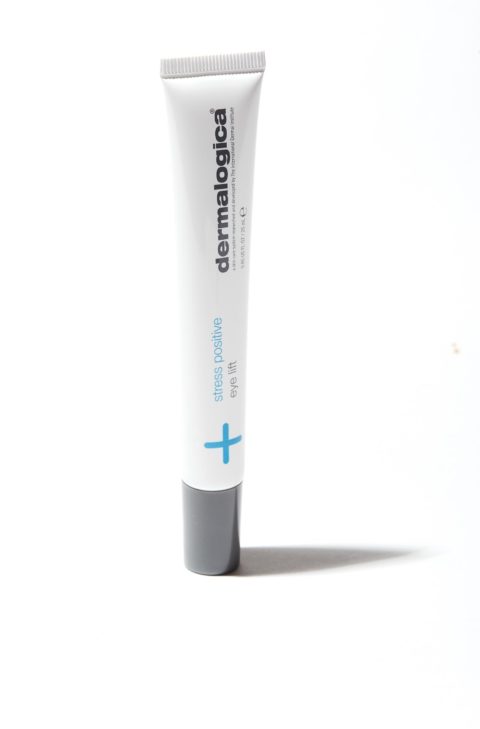Why Are More and More People Claiming to Have Sensitive Skin?
In her 1994 hit “Insensitive,” Canadian singer Jann Arden laments being on the receiving end of a cruel breakup. “How do you numb your skin, after the warmest touch?” she asks, searching for ways to avoid getting burned in her next romantic relationship. As sappy as it is real, the song is a poetic reminder of the subjective nature of sensitivity—something that applies as much to the skin as it does to matters of the heart.
Sensitive skin is a self-reported condition defined by uncomfortable symptoms like tightness, dryness, itching, burning and, in some cases, redness. “In a word, your skin hurts,” says Véronique Delvigne, scientific director at Lancôme. The French company recently coined the term “chrono-sensitivity” to describe temporary outbreaks of sensitive skin symptoms that hit multiple times throughout the year and last from a few days to several weeks. It’s something that more and more people are experiencing, as having sensitive skin becomes the new normal. “We used to say a couple of years ago that 50 per cent of women were declaring that they had sensitive skin,” says Delvigne. Today, this figure has reached 91 per cent in some countries.
For many, this could be due to awareness. Google searches for skincare are at an all-time high in Canada, more than doubling since January 2014, which could mean that the general population is becoming more knowledgeable about skincare. In a K-beauty-influenced era, where many routines involve as many as 13 steps both morning and night, this increased dermal awareness can be a double-edged sword. “The more potential irritants your skin is exposed to, the lower its threshold for irritation becomes over time and the harder it is to pinpoint what is irritating it,” says Sarah Villafranco, who founded skincare line Osmia Organics when she couldn’t find a cure for her perioral dermatitis, an itchy rash that affects the skin around the mouth.
While the root cause of sensitivity isn’t always clear-cut, Villafranco says there are several common ingredients that are known to be harsh, many of which are found in traditional soap. She was able to treat her issue with Osmia’s Black Clay Facial Soap, which is a sulfate-free blend of olive butter and Australian black clay. “Something like [bar] soap is going to literally wash away the fats on your skin,” explains Dr. Jason Rivers, a Vancouver-based dermatologist. The epidermis acts as a barrier to maintain moisture (lipids and water) to keep out pollutants, dirt and debris. “A compromised skin barrier is the first step toward developing symptoms of sensitivity,” he says.
Rivers advises his patients with sensitive skin to steer clear of products with high concentrations of powerful active ingredients, like retinoids and salicylic acid as well as chemical sunscreens and formaldehyde-releasing agents like DMDM hydantoin, which is an antimicrobial agent and preservative.
In addition to artificial chemicals, some “natural” ingredients can cause sensitivities, says Villafranco, adding that many people assume that if it’s plant-based, it’s safe and good for the skin. “That’s just not always true,” she says, citing high concentrations of essential oils and certain botanical extracts like Japanese honeysuckle and citrus as common natural causes of skin irritation.
Some irritants, such as air, are impossible to avoid. “Regardless of your background, ethnicity, line of work or habits, you are exposed to air; if you’re living, you’re exposed to air,” says Charmaine Cooper, education manager at Dermalogica Canada. Environmental debris (pollen and dust), pollution (smog, car exhaust and smoke) and particulate matter (minuscule airborne particles made of metals, carbons and other compounds) can lead to bouts of sensitivity by causing inflammation and dehydration—so can the sun and even the sunscreens created to protect skin from UV rays. Cooper recommends incorporating products into your routine with ingredients geared toward shielding the skin against pollution, such as activated charcoal, which helps absorb toxins that are already in pores, and niacinamide, a.k.a. vitamin B3, which has been shown to counteract the effects of pollution by boosting skin’s barrier and providing antioxidants that fight damaging free radicals. To shield against UV rays, Rivers recommends the daily use of mineral-based sun protection, which doesn’t irritate the skin like its chemical counterparts can.
It’s not only what’s on your skin but also what’s going into your mouth that can cause flare-ups. Inflammatory foods and ingredients (sugar, alcohol and trans and saturated fats) can lead to inflammation in the skin cells, which can manifest in a variety of ways, ranging from itching and redness to chronic conditions such as rosacea, eczema and psoriasis. Another common cause of sensitivity-related redness is emotional distress. “The same membrane that covers nerve endings in our brain is also found in our skin,” says Cooper. “That’s why we sometimes get flushing, blushing, itching and allergies when we’re emotionally stressed.” One of the easiest ways to reduce stress is to put down your cellphone, which may be another potential cause of sensitivity. While research is in its early stages, blue light rays emitted from screens appear to play a role in macular degeneration—the deterioration of the part of the retina responsible for vision—tipping off skincare product developers that it may also be a factor in dermal health.
Skin is our armour against the world, and when threats against it are coming from all sides, it seems there’s really only one way to stave off unwanted reactions. “You want to try to avoid those situations where the triggering agent is causing the issue,” says Rivers. Like sage songstress Arden suggests, learning how to be insensitive is a process. Audit your products for sensitizing ingredients, protect your skin from internal and external irritants and take some time to chill out.
The post Why Are More and More People Claiming to Have Sensitive Skin? appeared first on FASHION Magazine.





